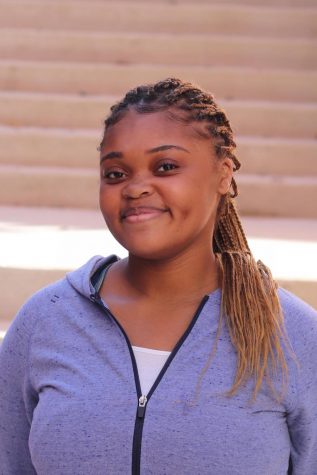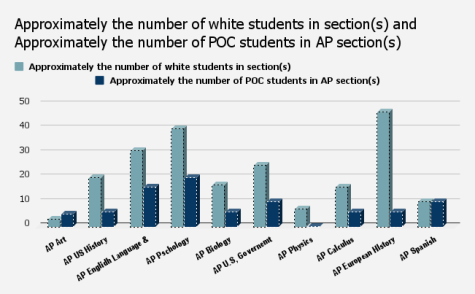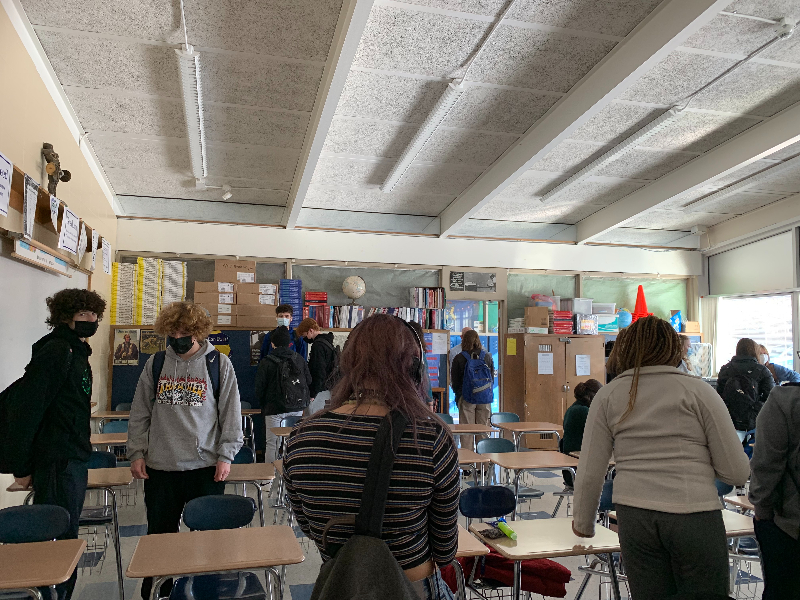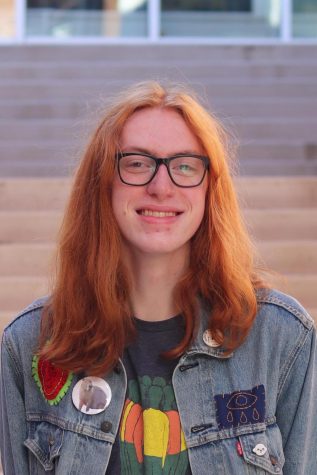AP classes lack diversity, causing fewer POC to enroll
January 6, 2022

I look back on my first encounter with an advanced class with a strong lack of diversity. I remember walking into my first AP class and already being nervous, but I shake the feelings out and take a seat. More and more students come into the classroom, and I realize that none of them look like me. Even though classes don’t last longer than 70 minutes, that day in class felt so long, and I realized that there wasn’t going to be that much of an improvement of diversity.
Website American Progress authors Roby Chatterji, Abby Quirk, and Neil Campbell discuss the reason why students are less likely to enroll into AP classes is due to reasons such as socioeconomic status, parental background, resource inequality, educator bias and grading and evaluation aspects.
Being tested from the start of kindergarten and through third grade made me realize that if you weren’t performing well on standardized tests, there was no chance for you to be enrolled in advanced classes in elementary school. These classes set students up for higher level courses in middle school and high school.
I remember my first time trying advanced classes in elementary school, which led to middle school, where English and math classes were divided into regular, strategic, and advanced levels. Taking tests such as the NWEA helps to determine what classes students are placed in.
When you arrive at high school, a wider range of classes are offered, including Advanced Placement and honors level classes. But POC students are more likely to stay in the comfort zone of the basic regular classes.
“I do think education in general has made a conscious effort to try and be more inclusive to not just race but gender identity as well,” Dean of Students Erin Anderson continued. “Being in a class that has less diversity doesn’t make the student have a negative experience, but makes an opportunity [for non-minorities] to have that conversation with their peers of students of color.”
Even when students do branch out into more advanced classes, there is still an unbalanced amount of diversity in the class.

*This graph is from teacher reported stats based upon their courses.
POC are less likely to be successful in advanced classes because there is little to no diversity.
POC represents 56% of Loy Norrix High students, but as classes become more advanced, you are less likely to see people of color in these rooms. In comparison, a basic beginner’s course usually has a much larger percentage of POC. The ratio of non-minority students to minority students in AP classes reported by AP teachers begins at zero and only rises to 2:1.
“I knew there was some type of diversity, but [it] looked like a majority ‘high ranker.’ I knew it was white students, but I thought there would be more,” sophomore AP US history student Riley Nilsson said.
High ranker meaning having a good academic scale. White students tend to have a stronger academic background due to starting higher level classes at a younger age compared to minority students who may have some knowledge but still need to learn more about the topic.
School segregation and educational inequality are both sensitive topics to talk about, whether it be with students or with teachers. However, it is a much-needed discussion to show what the problem is and why the problem still hasn’t been solved.
According to The Education Trust website that published a research report about the lack of students of color participating in advanced class opportunities, “Black and Latino students have a disadvantage relating to Advanced Placement (AP) courses. Black students make up 15% of the high schoolers nationwide, but only 9% of these students are enrolled in at least one AP course.”
Additionally, nearly a quarter of all high school students are Latino, but only 21% of students enrolled in AP courses are Latino.
Teachers don’t see as many people of color signing up for AP classes for different reasons; students don’t want to feel uncomfortable being one of the only students of color in their class.
“I have enrolled in my first AP class this year, and I was looking forward to seeing my friends in these classes, but I realized that this would not be the class to look forward to when it comes to diversity,” said junior taking AP Language and Composition Nadia Abbott.
As a current senior, I have had my fair share of AP classes. It becomes uncomfortable to know that every time I sign up for one, there will hardly be any diversity. It’s more likely for me to walk into an AP class and see a white majority: it makes me feel out of place and as though the class isn’t for me.
Loy Norrix has been working hard to get POC into AP classes by featuring students of color who are successful in class.
“We have done AP Scholar, and I target our minority students and their experiences, where we have the student’s name, picture, the course they are in and some feedback to highlight minorities taking AP classes,” said Dean Anderson.
Even with students of color being highlighted, there is still a long road to go in order to make sure that AP classes are just as diverse as regular classes.
“I think that progress could be made for every student, even our caucasion students. I would love to see us busting out the seams and in all AP classes,” said Dean Anderson.













James Johnson • Jun 8, 2022 at 7:17 am
This is a definite problem, and it creates a kind of loop. When students anticipate not feeling welcome or like they belong in a classroom, they are less likely to take the class, which in turn leads to continued lack of diversity moving forward. Especially in a US History course, diversity is so important.